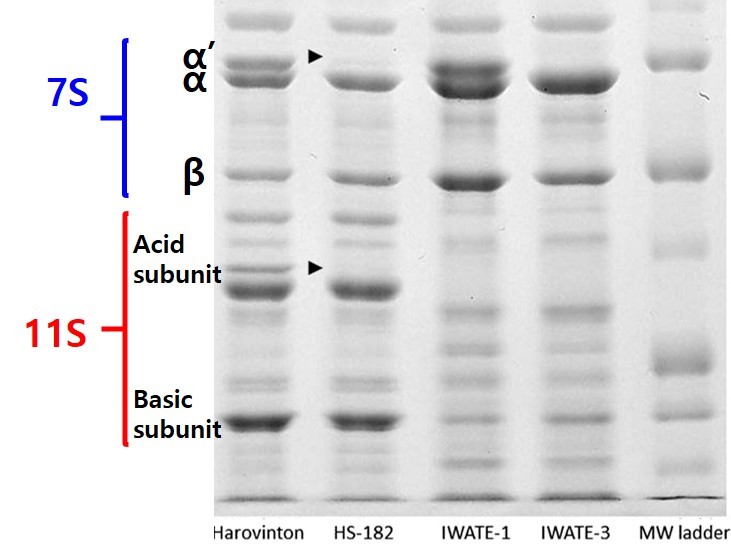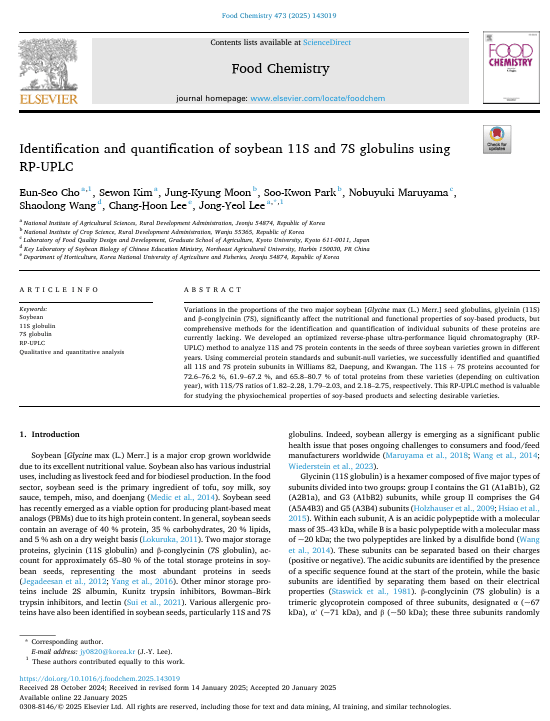The Rural Development Administration announced on the 16th that it has developed a world-first analysis method to precisely measure the constituents, content, and ratio of 11S (glycinin) and 7S (beta-conglycinin), the main proteins of soybeans.
Soybeans contain 35-40% protein, of which about 80% is comprised of 11S and 7S proteins. The quality of foods such as tofu, soy milk, and plant-based meat substitutes varies depending on the content and ratio of these two proteins.

This analysis method has been developed using UPLC (Ultra Performance Liquid Chromatography) equipment, allowing identification of subcomponents that were difficult to differentiate with the conventional SDS-PAGE method. Each analysis takes 20 minutes and can simultaneously process up to 100 samples, making it suitable for mass processing. The previous method took 8 hours and could only analyze 10 samples per session.

The Rural Development Administration explained that it can perfectly distinguish all subunits (G1-G5, α, α’, β) of the 11S and 7S proteins by comparing the ordinary varieties of soybeans and their mutations, and it can also calculate the ratio of each unit. In the case of the representative variety W82, 11S protein was measured at 55.5%, and 7S protein at 22.8%.
The results of this study have been published in the international food journal ‘Food Chemistry (IF=8.5)’ and a patent application has been completed (application number 10-2024-0195740).
The Rural Development Administration held a technology sharing session on April 29, providing theoretical education and practical training to domestic digital breeding and plant-based meat researchers. Currently, protein analysis is underway on 410 core collections of soybeans and is expected to be completed by December this year.
Kim Nam-jeong, director of the Agro-Bio Research Division of the Rural Development Administration, stated, “This technology will be used as a core fundamental technology in the fields of digital breeding of soybeans and advanced food technology,” and added, “It could have extensive applications in both domestic and international food and bio industries.”
